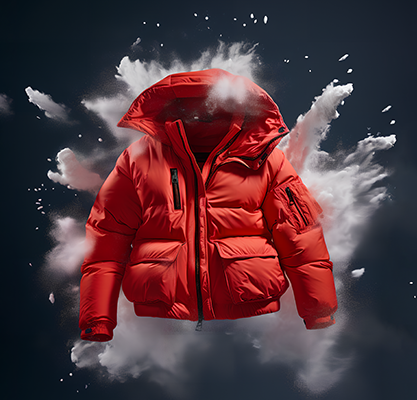Regarding outdoor activities, having the proper clothing can make a significant difference in your overall comfort and performance. One crucial factor to consider is the breathability of outdoor clothing. Breathability refers to the ability of a fabric to allow moisture vapor or air can exchange with the outside. This article will delve into breathability, focusing on the distinctions between waterproof, breathable and regular breathable garments.
Understanding Breathability: The Key to Comfort
Breathability is vital in regulating your body temperature and keeping you comfortable during various outdoor pursuits. Your body generates heat and moisture when hiking, running, or cycling. This moisture becomes trapped against your skin without proper breathability, leading to discomfort, chills, and potential health risks.
The breathability of casual outdoor clothing
Most garments that use non-finish fabric provide breathability, called air permeability. Air permeability allows air to move freely between the inside and outside of the garment, which is an excellent benefit in summer, allowing heat to escape quickly. But in the face of adverse weather conditions, this can cause discomfort and affect your performance.
You can confirm the air permeability through the ASTM D737 test. The larger the value, the more breathable, and the smaller the value, it is windproof.
The breathability of waterproof breathable clothing
Waterproof, breathable garments take breathability to the next level. These garments keep you dry in wet conditions while allowing your body’s moisture to escape. The moisture is a vapor status. This is achieved through advanced technologies that
Incorporate microporous or hydrophilic membranes or coatings. These microscopic pores are small enough to prevent water droplets from penetrating from the outside yet large enough to let water vapor molecules exit from the inside.
For the water vapor transmission test, you must know whether the membrane or coating used is microporous or hydrophilic. If it is a microporous type, we recommend you use the JIS L 1099 A1 method for inspection.
If it is hydrophilic, it is recommended that you use the method of JIS L 1099 B1 to test. The larger the value, the better the effect.
Choosing the Right Garment
When selecting outdoor clothing, it’s crucial to assess the breathability factor based on the activities you plan to undertake and the weather conditions you expect to encounter. Investing in waterproof breathable clothing is a wise choice if you anticipate wet conditions, such as rain or snow. On the other hand, for milder conditions or less intense activities, regular breathable garments might suffice.
In conclusion, the breathability of outdoor clothing is a critical consideration for both comfort and performance. While breathable clothing offers moisture permeability, waterproof breathable garments take things a step further by effectively preventing external water intrusion while allowing internal moisture to escape. The balance between these factors is achieved through advanced technologies that make outdoor experiences more enjoyable and less compromised by the elements.
So, whether you’re embarking on a challenging mountain hike or simply taking a leisurely walk in the park, remember to factor in the breathability of your clothing. Your body will thank you for it as you stay comfortable and dry throughout your outdoor adventures.
You may also like





